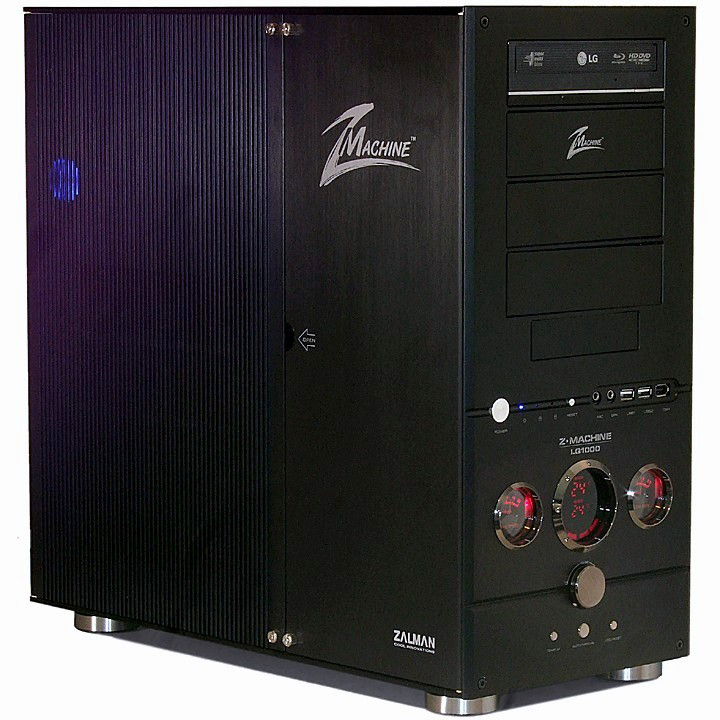System Builder Marathon: The $4,500 Super PC
Conclusion
We’re pleased with the overall quality and performance of our newest extreme-performance PC, but we’d like to remind readers of a few shortcomings.
We regret that we used a PCI Express—rather than a PCI—audio card, given our change in motherboards. The results were still pleasing, but not perfect.
A more significant setback was the inability of our OCZ PC3-12800 Platinum Edition memory to run at anything close to its rated speed and timings. The problem was overheating, caused partly by the use of four modules packed tightly together. We’re far from alone in experiencing this problem, as even professionally-built high-end gaming machines are being sent out with memory at slower BIOS default speeds. A RAM cooling fan might have helped, but the additional fan we’d selected—the Antec Spotcool—isn’t available from NewEgg at this time.
If our budget had been unlimited, one of the first things we would have considered adding would have been a hardware-based RAID controller. We still would have faced the problem of finding a slot for it, since the only open PCI Express slot was partly blocked by the cooling system of our Zalman LQ1000 case.
As a final caveat, we’re going to keep mentioning the defect in Zalman’s LQ1000 case until the company addresses it. Motherboard mounting holes are slightly out of position, and this type of problem is only exacerbated by the high-quality materials that can’t flex enough to compensate.
Our finished system was a pleasure to use. It’s extremely quiet most of the time and extremely fast, and it looks great sitting on a desk. We question why anyone would want to hide such a piece of art under a desk, and the smaller case of this month’s high-end system meant that we didn’t have to.
Get Tom's Hardware's best news and in-depth reviews, straight to your inbox.
-
cangelini cjdavis7So, how many times can they drop NewEgg's name in one article?Reply
The reason we partnered up with NewEgg on this was to have access to a much wider range of hardware then we'd otherwise have. My hope is that this is an asset to our readers and does not interfere editorially. -
cangelini Duncan NZI'd drop Neweggs name lots if they gave me a $4500 systemReply
Just to clarify, all of the hardware goes straight back to NewEgg once the story is done. The arrangement simply gives us access to the hardware, straight from e-tail, to build, benchmark, and write about. It's good for us because we're saved the effort of finding manufacturers who want to send out their hardware and we think it's good for our readers because we can construct the systems we'd *really* build on these budgets. =) -
master9716 4500 . Why would anyone spend 800 on a case? I dont really see a point to the article but oh well . New egg does have the best prices out there but mwave does beat it sometimes.Reply -
cangelini master97164500 . Why would anyone spend 800 on a case? I dont really see a point to the article but oh well . New egg does have the best prices out there but mwave does beat it sometimes.Reply
Why would anyone spend $500 on a video card or $1,000 on a processor? ;-)
This is why we do three stories with a trio of price targets--something for everyone! -
neiroatopelcc Anyone more concerned with looks and styling than just function would spend more than a few bucks on a case.Reply
ie. Anyone who'd pick an alfa romeo or a lexus over an ordinary honda accord would want a more expensive case. -
neiroatopelcc We should also note that the on-board Intel controller is capable of excellent RAID 5 performancePerhaps I'm mistaken, but I am not thrilled by the intel raid controller. Perhaps the ich10 is better than the ich9 in this regard, but I only scored about 90mb/sec max read speed in raid5 (5x500gb) on my p35. That's the same speed as my 3x 35gb raptors in raid 0 on my secondary system, so it's okay. But still. A single new spinpoint is faster than the raid 5, so I'm quite sure my ich9r controller is requiring too many resources to work properly fast. Or it's my oc that causes it to slow down somehow. Dunno yet.Reply
Anyway, my experience with intel software raid running raid5 isn't that it's speedy.
ps. wouldn't it have made sense to save a few bucks on storage (2x1,5tb or something) and added memory cooling blocks to go with the water cooled chassis? -
randomizer Memory doesn't get hot enough to justify losing 2TB of storage just so you can add some fancy cooling blocks to it. 4TB does sound pretty sweet, but I don't know how I'd fill up 500GB let alone 8x that. E-peen I guess.Reply -
neiroatopelcc "2.) The Cooler Master CMPSU-1000HX power supply has ferrite rings on the flat, removable PCI Expresshttp://en.wikipedia.org/wiki/PCI_Express power cables that prevented them from being run between cards. We had to use the soldered-on "round" cables for the top card."Reply
it's still a corsair psu according to the picture. (page 6)
@ randomizer : If you'd replace the 4 drives with 2 bigger ones you'd only lose 1tb of storage, and half your theoretical read/write speed (and slightly improve your seek time). Anyway, if memory is running hot I would definetly want some cooling for it. My first choice would be to throw away the sound card and see if 90 bucks was enough for a decent cooler (onboard sound is excellent really), but since toms is rather happy about the sound, I think storage is the best place to compromise.
Anyway, my point is - add a cooler to the modules! actually ocz already have models out there with watercooling built in - since they picked ocz they could've gotten those if newegg had em.


